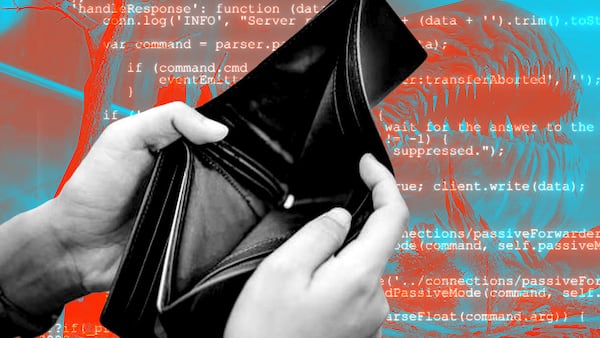- We look back at the airdrops of 2023.
- We find out what that may mean for airdrops in 2024.
- We also take a look at efforts to fight Sybil attacks.
A version of this story appeared in our The Decentralised newsletter. Sign up here.
GM, Tim here,
A very Merry Christmas to those who celebrate!
This special festive edition of The Decentralised will look back at all the biggest crypto airdrops of 2023.
We’ll also cover the new trends that emerged this year, how the airdrop meta is changing, and what it all might mean for future airdrops.
So without further ado, let’s get into it.
The end of Sybil attacks?
Sybil attacks are one of the biggest problems for projects planning an airdrop.
It refers to the process of attempting to qualify for an airdrop across multiple wallets or accounts.
This year, several big airdrops from Arbitrum, Optimism, and Sei tried to exclude Sybil attackers.
Despite many projects’ best efforts, the verdict is that such measures have achieved limited success.
That could be about to change.
Consensys’ layer 2 Linea is employing an advanced anti-Sybil system, potentially in preparation for a future airdrop.
Such systems probably won’t end Sybil attacking for good.
Still, as they take into account social profiles, GitHub activity, and even an active Coinbase account to generate sufficient credentials, they make Sybil attacking much more time-consuming and limit the impact on legitimate users.
With projects increasingly focusing on Sybil attackers, and a multitude of potential airdrops currently available, airdrop hunters might find it more beneficial to stick with one wallet.
By trying to qualify for as many different drops as possible, they can avoid the time spent targeting a single project with multiple addresses and the associated risk of disqualification on all of them.
Points systems are popular — but be careful
NFT marketplace Blur changed the airdrop meta forever when it gamified its season two airdrop with a points system.
Initially, users rushed to register activity, spurred on by the promise of points converting into valuable tokens, all tracked on a public scoreboard for bragging rights.
This year, dozens of projects, including friend.tech, Orbiter, Swell, Kamino, Rainbow, and Blast, have taken a leaf out of Blur’s book and are using points systems to incentivise users.
There are of course some positives to projects using points systems, the biggest being that it can remove ambiguity over whether or not there will be an airdrop in the first place. Many projects employ points systems as a stop gap until clearer regulations for issuing tokens might come into effect — particularly in the US.
When users know there will be an airdrop — and especially if more activity equals a bigger airdrop — the whole process of earning points starts to resemble liquidity mining more than anything else.
But unlike liquidity mining, where users can easily calculate their yields, points systems keep potential returns deliberately vague.
Playing the points game can still be a great use of investors’ time and resources, though there are signs that the DeFi community is starting to see points systems for what they are.
developing a long term points system now instead of just airdropping tokens is about as smart as trying to reinvent the OHM model in march 2022
— satsdart (@satsdart) December 12, 2023
Points systems were fine for capturing investor attention during the crypto winter.
Still, it may be that if crypto market activity continues to expand, projects still confusing users with points systems may be left in the dust.
‘Quests’ — not such a waste of time after all
Spend enough time airdrop hunting on social media and you’ll likely get directed to sites like Galxe, Layer3, and Guild.
These platforms run campaigns where users can complete various on- and off-chain tasks to earn credentials, usually in the form of NFT badges.
For the most part, participating in such campaigns has been a waste of time.
Despite their popularity, none of the biggest airdrops of 2023 used the NFTs and credentials earned through these sites as a criteria. For smaller projects, campaigns might be more productive.
Seamless, a fork of Aave on Coinbase’s buzzy Base chain, recently launched a token and airdropped a decent chunk of it to those who had completed its Galxe quests.
🚀 ICYMI: The SEAM airdrop is open & thousands of web3 users are eligible!
— Seamless Protocol (@SeamlessFi) December 12, 2023
This includes users of partner products, including the Blueberry Vaults built around @GMX_IO & claimers of several @Galxe quests. See if you're eligible 👇👇
If you’re planning to spend time with such campaigns, ensure they are the ones the project itself has created and not a third party.
It might also be better to avoid the most popular campaigns with hundreds of thousands of participants.
When participation gets that high, it often means its been Sybil attacked, making it less likely the project will use the campaign as an airdrop criteria.
Final thoughts
Ultimately, the biggest driver of when a project will airdrop tokens is the market itself.
Airdrops are a key marketing strategy, and no project wants to launch a token when no one is paying attention.
Simply put, the higher Bitcoin’s price goes in 2024, the more airdrops there likely will be.
If you want to hunt for potential airdrops, it’s well worth going off the beaten path and experimenting with lesser-known projects.
Jito, a liquid staking protocol on Solana, is a perfect example of such a strategy paying off.
Only 10,000 addresses were eligible to receive its recent airdrop, a testament to how under-the-radar it was.
DefiLlama also provides a frequently updated list of all the DeFi projects yet to launch tokens — a great resource for any airdrop hunter.
Thanks for reading, and enjoy the holidays!









